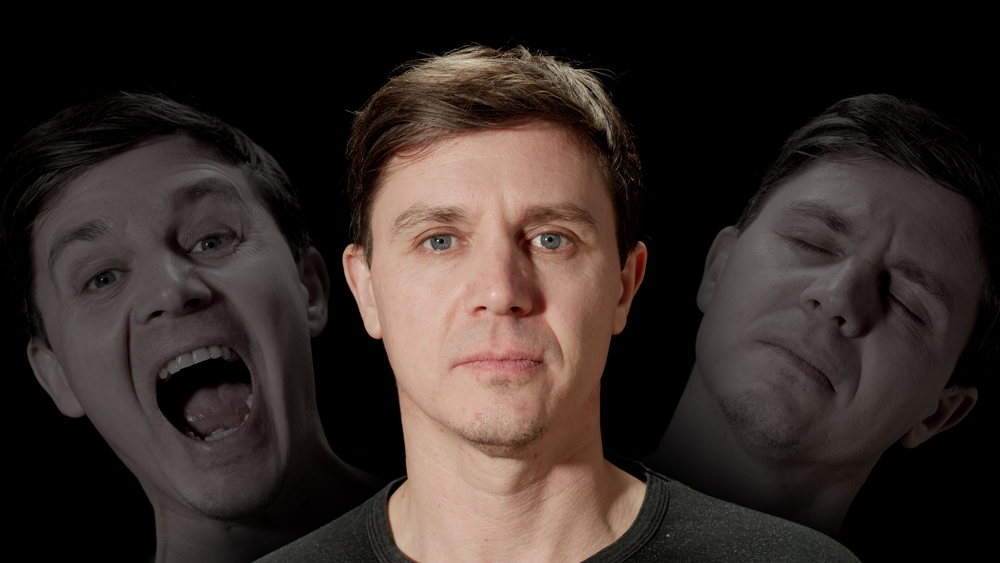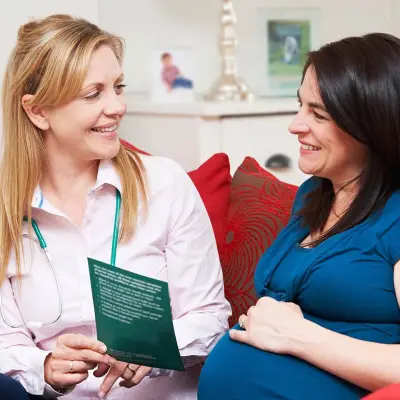Are you feeling overwhelmed by intense emotions but find yourself keeping them hidden from those around you? Maybe you’re going through a challenging time, and you’ve stumbled upon the term Quiet BPD, wondering if it could explain your experiences.
Whether you’re seeking answers for yourself or trying to understand a loved one, this guide aims to shed light on Quiet Borderline Personality Disorder (BPD) and how it impacts lives. Let’s explore what Quiet BPD is and uncover the signs, triggers, and ways to navigate this often misunderstood condition.
Jump to:
- Quiet BPD Definition
- What Does Quiet BPD Feel Like?
- Quiet BPD Symptoms
- What is the Difference Between Quiet BPD and Normal BPD?
- How Do People with Quiet BPD Act?
- What Triggers Quiet BPD?
- Quiet BPD and Relationships
- What is the Best Treatment for Quiet BPD?
- Frequently Asked Questions about Quiet BPD
- Study Borderline Personality Disorder for £29
Quiet BPD Definition

Quiet BPD is a form of Borderline Personality Disorder that often goes unnoticed. Unlike typical BPD, where emotions and behaviours are more visibly expressed, Quiet BPD involves internalising feelings and thoughts. This means the person may appear calm and composed on the outside while battling intense emotional turmoil on the inside.
What Does Quiet BPD Feel Like?
Living with Quiet BPD can be incredibly painful. People with this condition often feel a constant sense of emptiness, shame, and self-doubt. They may struggle with intense emotions but keep them hidden, leading to a sense of isolation and misunderstanding. You might feel like you're on an emotional roller coaster, but no one else can see it.
Recommended for you!
Best SellersQuiet BPD Symptoms
Recognising Quiet BPD symptoms can be challenging, as people with this condition often conceal their emotional struggles. Understanding these symptoms is essential for identifying Quiet BPD and providing the necessary support. Here are some common signs:
Internalising Emotions
People with Quiet BPD tend to suppress their emotions rather than expressing them outwardly. This means they might not display the typical signs of distress, such as crying or anger outbursts. Instead, they bottle up their feelings, which can lead to intense internal turmoil. This internalisation can cause significant emotional pain and can make it difficult for others to recognise their struggles.
Self-Criticism
Harsh self-judgment and low self-esteem are common features of Quiet BPD. People with this condition often have a critical inner voice that constantly puts them down. They may feel inadequate and unworthy, and excessively blame themselves for any perceived mistakes or failures. This relentless self-criticism can lead to feelings of shame and guilt, contributing to their overall emotional distress.
Avoidance
Avoidance behaviours are common in Quiet BPD. People may go out of their way to avoid conflicts or any situation that might trigger emotional discomfort. This can include avoiding difficult conversations, withdrawing from social interactions, or neglecting personal needs to keep the peace. While this strategy might provide temporary relief, it often exacerbates feelings of isolation and loneliness in the long run.
Emotional Numbness
Emotional numbness or detachment is another symptom of Quiet BPD. People with this condition may feel disconnected from their emotions, experiencing a sense of emptiness or numbness. This detachment can make it hard for them to engage fully in relationships or activities they once enjoyed. Emotional numbness is a coping mechanism to protect against overwhelming feelings but can lead to a sense of disconnection from yourself and others.
High Functioning
One of the most misleading aspects of Quiet BPD is the ability to appear high-functioning. Despite the internal chaos, individuals with Quiet BPD often seem to cope well externally. They might excel in their careers, maintain a social life, and manage daily responsibilities efficiently. However, this outward appearance can mask the intense inner struggles they face, making it difficult for others to understand the depth of their condition.
Additional Symptoms to Consider
While the above are key symptoms, Quiet BPD can also include other subtle signs that are important to recognise:
- Perfectionism: An intense drive to be perfect in all aspects of life, leading to stress and disappointment when these standards are not met.
- Chronic Feelings of Emptiness: Persistent feelings of emptiness and boredom that can be difficult to shake.
- Fear of Abandonment: Deep-seated fears of being abandoned or rejected, even in stable relationships. This fear can lead to significant anxiety and efforts to avoid perceived abandonment.
- Self-Harm: Engaging in self-harm or other self-destructive behaviours as a way to cope with intense internal pain.
- Overcompensation: Overcompensating for perceived flaws by being overly accommodating or people-pleasing, often at the expense of your own needs and well-being.
What is the Difference Between Quiet BPD and Normal BPD?
The main difference between Quiet BPD and typical BPD lies in how emotions are expressed. In typical BPD, emotions are often externalised, leading to visible outbursts and impulsive behaviours. In Quiet BPD, emotions are internalised, leading to silent suffering and self-destructive thoughts.
How Do People with Quiet BPD Act?

People with Quiet BPD often act in ways that conceal their true feelings. They may appear calm, reserved, and even happy, while hiding intense inner turmoil. They might go out of their way to avoid conflicts and may struggle with setting boundaries. Their actions can be confusing to others because the external behaviour doesn't match the internal experience.
What Triggers Quiet BPD?
Various factors can trigger Quiet BPD symptoms, leading to increased emotional distress and internal turmoil. Here are some common triggers:
- Stressful Situations: High stress, whether from work, school, or personal life, can exacerbate symptoms and make it difficult for people to manage their emotions.
- Interpersonal Conflicts: Arguments, misunderstandings, or any form of conflict can trigger intense emotions and feelings of instability.
- Perceived Rejection: Feeling rejected or abandoned, whether real or imagined, can lead to significant emotional distress and feelings of worthlessness.
- Changes in Routine: Sudden changes in daily routine, environment, or lifestyle can create feelings of instability and anxiety.
- Criticism or Negative Feedback: Receiving criticism or negative feedback can be particularly challenging, leading to heightened self-criticism and emotional pain.
- Loneliness or Isolation: Prolonged periods of loneliness or social isolation can intensify feelings of emptiness and emotional numbness.
- Memories of Past Trauma: Reminders of past traumatic events can trigger intense emotional responses and feelings of helplessness.
- Unmet Expectations: When personal expectations are not met, it can lead to disappointment and self-blame, exacerbating symptoms.
- Lack of Sleep: Insufficient sleep can affect emotional regulation, making it harder to cope with everyday stressors.
- Health Issues: Physical health problems or concerns can trigger emotional distress and feelings of vulnerability.
- Financial Stress: Worrying about money or experiencing financial instability can increase anxiety and emotional turmoil.
- Significant Life Events: Major life changes such as moving, changing jobs, or the loss of a loved one can create significant emotional upheaval.
- Feelings of Inadequacy: Situations that highlight perceived inadequacies or failures can trigger intense self-criticism and emotional pain.
- Social Pressure: Pressure to conform to social norms or expectations can lead to feelings of inadequacy and internal conflict.
Quiet BPD and Relationships
Relationships can be particularly challenging for those with Quiet BPD. The fear of abandonment and intense emotional swings can lead to difficulties in maintaining stable relationships. Here are some common patterns:
- Silent Treatment: Instead of expressing anger, they may withdraw and become silent.
- People-Pleasing: Trying to keep everyone happy to avoid conflict.
- Idealisation and Devaluation: Shifting between seeing a partner as perfect and flawed.
- Fear of Rejection: Avoiding expressing needs out of fear of being rejected or abandoned.
Quiet BPD and Romantic Relationships
Romantic relationships can be especially tricky. The person with Quiet BPD may struggle with intense feelings of love and fear simultaneously. They might idolise their partner one moment and feel deeply insecure the next. This push-pull dynamic can create confusion and tension in the relationship.
Quiet BPD Relationship Cycle
The relationship cycle in Quiet BPD often involves periods of intense closeness followed by sudden withdrawal. This can be due to fear of getting too attached and then potentially being hurt. Understanding this cycle is essential for both partners to navigate the relationship healthily.
What is it Like Dating Someone with Quiet BPD?
Dating someone with Quiet BPD can be both rewarding and challenging. It's important to be patient, understanding, and supportive. Communication is key, as is recognising the signs of internal distress. Building trust and providing a safe space for your partner to express their feelings can help strengthen the relationship.
How can loved ones support someone with Quiet BPD?
Loved ones can support someone with Quiet BPD by offering a non-judgmental and empathetic presence, encouraging them to seek professional help, and educating themselves about the condition. It's important to be patient, listen actively, and avoid minimising their experiences.
What is the Best Treatment for Quiet BPD?

The best treatment for Quiet BPD involves a combination of therapy, medication, and self-care strategies. Here are some effective approaches:
- Dialectical Behaviour Therapy (DBT): A form of therapy specifically designed for BPD that focuses on mindfulness, emotional regulation, and interpersonal effectiveness.
- Cognitive Behavioural Therapy (CBT): Helps identify and change negative thought patterns.
- Medication: Antidepressants or mood stabilisers can help manage symptoms.
- Self-Care: Regular exercise, healthy eating, and mindfulness practices can improve overall well-being.
Frequently Asked Questions about Quiet BPD
Can Quiet BPD go away on its own?
Quiet BPD, like other forms of BPD, is a chronic condition that typically does not go away on its own. However, with appropriate treatment and support, people can manage their symptoms and lead fulfilling lives.
How does Quiet BPD affect daily life?
Quiet BPD can significantly impact daily life by affecting relationships, self-esteem, and overall emotional well-being. People may struggle with constant self-doubt, emotional numbness, and a fear of rejection, which can influence their interactions and ability to cope with everyday stressors.
Is Quiet BPD the same as high-functioning BPD?
Quiet BPD and high-functioning BPD are similar in that both involve internalising symptoms and appearing outwardly composed. However, high-functioning BPD specifically refers to people who can maintain a high level of outward success in their professional or personal lives despite their internal struggles.
How do people with Quiet BPD cope with their emotions?
People with Quiet BPD often cope with their emotions by internalising them, using avoidance strategies, and engaging in self-soothing behaviours. Some may also use maladaptive coping mechanisms such as self-harm or substance abuse to manage their distress.
Can Quiet BPD coexist with other mental health conditions?
Quiet BPD can coexist with other mental health conditions such as depression, anxiety, post-traumatic stress disorder (PTSD), and eating disorders. It's important for people to receive a comprehensive evaluation to address all co-occurring conditions.
What are the signs of a meltdown in someone with Quiet BPD?
A meltdown in someone with Quiet BPD may not be outwardly visible. Instead, it could involve intense internal emotional distress, withdrawal from social interactions, increased self-criticism, and possibly self-harm or suicidal thoughts. Recognising these signs requires close observation and understanding of the individual's typical behaviours.
Is Quiet BPD genetic?
There is evidence to suggest that BPD, including Quiet BPD, can have a genetic component. However, environmental factors such as childhood trauma, abuse, and unstable relationships also play a significant role in the development of the disorder.
How can someone with Quiet BPD find help?
People with Quiet BPD can find help through mental health professionals such as psychologists, psychiatrists, and therapists. Therapy modalities like Dialectical Behaviour Therapy (DBT) and Cognitive Behavioural Therapy (CBT) are particularly effective. Support groups and online resources can also provide valuable support and information.
Can medication help with Quiet BPD?
Medication can be helpful in managing some symptoms of Quiet BPD, particularly co-occurring conditions like depression and anxiety. However, medication is often most effective when combined with therapy and other forms of treatment.
What is the prognosis for someone with Quiet BPD?
With appropriate treatment and support, many people with Quiet BPD can improve their symptoms and lead meaningful lives. Early intervention, ongoing therapy, and a strong support network are key factors in a positive prognosis.
Are there any famous people with Quiet BPD?
While there are public figures who have spoken about their experiences with BPD, it is less common for people to specify Quiet BPD due to its less visible nature. Nonetheless, awareness and acceptance of all forms of BPD are growing, helping to reduce stigma and encourage open discussions.
Can You Tell if Someone Has Quiet BPD?
Detecting Quiet BPD can be challenging because symptoms are often hidden. However, if you notice someone who frequently seems to be struggling internally, avoids conflict, and has periods of intense self-criticism, they might be dealing with Quiet BPD. It's important to approach them with empathy and understanding.
How Rare is Quiet BPD?
Quiet BPD is not well-known, but it's not necessarily rare. Many people with BPD might exhibit traits of both typical and Quiet BPD at different times. The lack of outward symptoms often means it goes undiagnosed or misdiagnosed.
Do People with Quiet BPD Lie?
People with Quiet BPD may lie or hide the truth to avoid conflict or rejection. This is often a defence mechanism rather than intentional deceit. They might lie about their feelings or pretend to be okay when they're not.
What is a Favourite Person in Quiet BPD?
A favourite person is someone who a person with BPD, including Quiet BPD, relies on heavily for emotional support and validation. This relationship can be intense and can lead to dependency, with the favourite person's actions significantly impacting the person’s emotional state.
Why is Quiet BPD So Painful?
Quiet BPD is painful because the emotional turmoil is internalised. The person feels intense emotions but doesn't express them, leading to feelings of isolation, misunderstanding, and self-blame. The lack of external validation for their struggles can make the pain feel more acute.
What Does Quiet BPD Rage Look Like?
In Quiet BPD, rage is often turned inward. Instead of explosive outbursts, the person may experience intense self-criticism, self-harm, or depressive episodes. This internalised rage can be just as destructive as externalised anger.
What is the Silent Treatment in Quiet BPD?
The silent treatment is a common behaviour in Quiet BPD. Instead of confronting issues directly, the person may withdraw and become silent, using this as a way to cope with intense emotions without causing conflict.
Is Quiet BPD Recognised in the UK?
Quiet BPD is recognised in the UK, though it might not always be diagnosed specifically. Mental health professionals are becoming more aware of the different ways BPD can manifest, including the quieter, internalised forms.
What is the Real Name for Quiet BPD?
The term "Quiet BPD" is not an official diagnosis but rather a way to describe a form of BPD where symptoms are internalised. It falls under the broader category of Borderline Personality Disorder.
Recommended for you!
Best SellersStudy Borderline Personality Disorder for £29
If you're interested in learning more about Borderline Personality Disorder, consider enrolling in the Borderline Personality Disorder Awareness Course at Centre of Excellence. This detailed online course offers fascinating insights and strategies for managing BPD in both a personal and professional setting. For a limited time, the course is available at a discounted price of £29.













